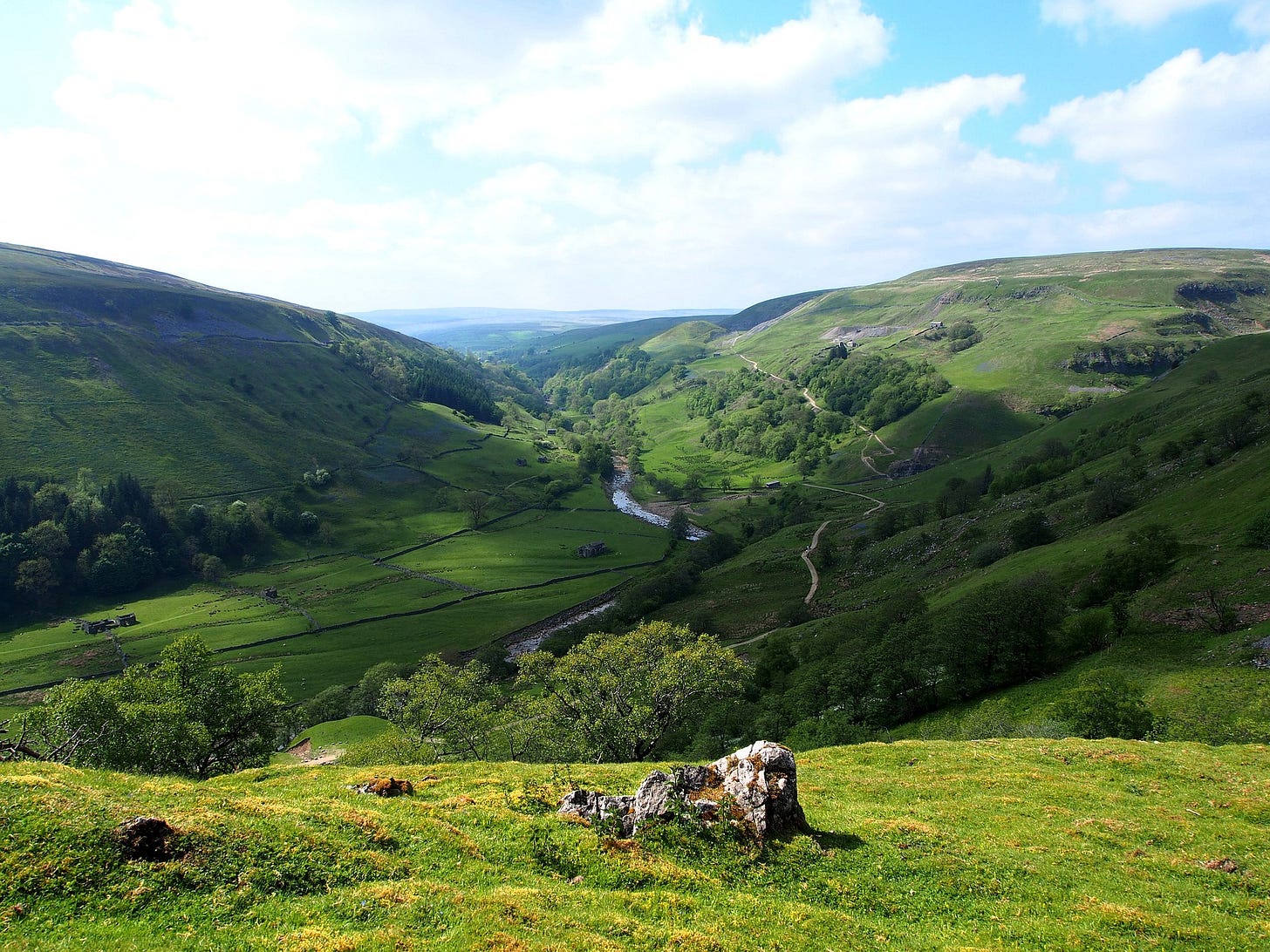Now the English Countryside Is Racist Too
The Fitzwilliam Museum in Britain has decided to overhaul its collection, demoting some pieces and promoting others, in accord with the prevailing ideology.
New signage at the museum provides warning labels next to landscapes, so that people can be forewarned that pictures of "rolling English hills" can lead to feelings of "pride towards a homeland", which is apparently a bad thing in the eyes of some. They are desperate to avoid feelings of nationalism which they claim represent the "darker side" of landscape imagery.
The warning sign goes on to explain:
“The darker side of evoking this nationalist feeling is the implication that only those with a historical tie to the land have a right to belong."
But showing a gorgeous countryside picture doesn't tell some people that they don't belong, it merely makes some feel like they do. The sense of warmth and comfort that they get from what feels like home is not an act of aggression towards those for whom it is not their home, or was not their ancestral home. In other words, one group (the English) don't need to be deprived of that sense of home simply because it doesn't generate the same nostalgia within immigrants, and it's an act of cruelty to try to deprive people of what is theirs.
One can't help but doubt there would be the same degree of indignation about nationalism if the country pictured were Ghana, Mexico, or the Democratic Republic of the Congo. If Tunisians found the Sahara to be a source of pride (and many do), would there be condemnation for the dangerous feelings such pictures might generate? The problem isn't nationalism per se, it's certain nationalities having a sense of identity.
Yet, in Cambridge University’s Fitzwilliam institution, the English countryside is racist. Not only have these landscape pictures been "reshuffled" and affixed with warning labels, other images have been added—such as those that remind people of slavery and racial strife. Art that is lower quality than most of the museum's pieces, but which was painted by black artists, have been intermingled.
Interestingly, the director of the museum felt the need to announce that they were not doing so to be "woke". Of course, that's exactly what they were doing, but more intriguing is that they don't want you to think that they are. Instead, we are supposed to accept that they are simply right.
“Being inclusive and representative shouldn’t be controversial; it should be enriching.”
— Luke Syson, director of the Fitzwilliam Museum in Cambridge
There are word games at play here. His statement asserts that A) What they're doing is inclusive and B) that inclusivity is a good in its own right.
The word ‘inclusion’ is used so self-righteously by such people, as if all inclusion is positive. But surely we shouldn't want to include all, all of the time? Should professional tennis include bad players? Should a failed medical student become your doctor? Should bad art be included at a museum? Nobody thinks that all inclusion is a good thing. It’s blatantly dishonest to assert otherwise.
This particular type of forced inclusion seems grossly offensive to the black artists who were included to make some kind of political statement. If one wanted to reduce racial division, he could simply showcase inspiring art, and show the variety of artists. Showing bad politically-driven art, and then justifying it under the banner of inclusivity is not only the subtle racism of low expectation, but it also fuels resentment and division. Articles describing the new selections show that pieces by black artists are obsessed with race and are politically charged.
They’re apprehensive at being called “woke” because the public mockery reduces the sense of sanctimoniousness that they had hitherto engaged in. It’s not about doing what is right, but about doing so in public perception. Thus, it’s all a ruse that hurts those that it claims to help, deprives people of wholesome enjoyment, promotes more bad art, and further inflames racial division.



It's funny though. I love Japanese paintings of cliffs and waterfalls. Chinese paintings of cliffs and waterfalls. I love paintings from India of cliffs and waterfalls. Never did I say to myself... "those Japanese people must hate me because of their paintings" nor did I ever once imagine that they made me feel unwelcome. In fact, I'd say, hey, wouldn't it be great to see those in real life. Clearly what they're doing here is the same as everything else they do. The appreciation of western art even if it has barely an idea in it at all that is political must be perceived as such. The Mona Lisa is next. Shakespeare. How about Michaelangelo. Perhaps all the actual trees, wildflowers and grasses should be removed and replaced. Can't have native wild plants. Those weeds are racist. Cemetaries will also be next. Can't offend people by suggesting that there is death, or that we used to 'remember' the dead. It will probably happen this year that any building or structure, even it's been there for 500 years, with a cross or crucifix must be removed or torn down...after all, it's a hate crime...
This is Insane. Hope air doesn’t become racist.